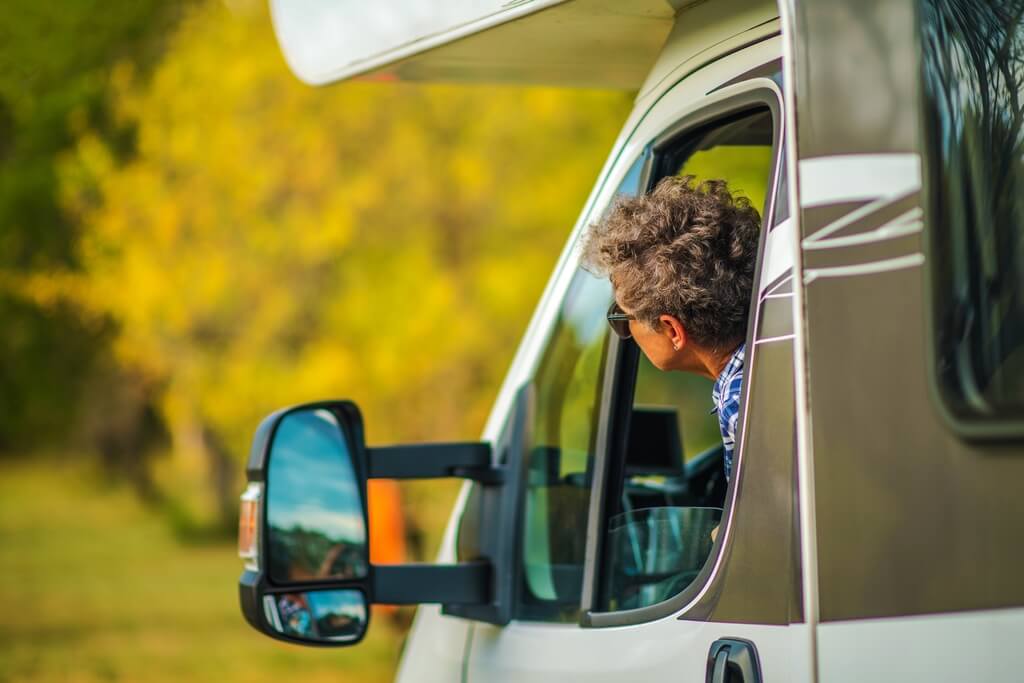Recreational vehicles are a modern wonder: you are driving your home from place to place, especially if you live in it full time. RVs open up a world of new experiences, new places to see, new people to meet. RVers learn new skills for living a full RV life. Driving is one of the most important. Good drivers must protect both family and home when on the road.
Before starting your first road trip, every RVer we know advises practice. Some even recommend a driving school. Whether your rig is a large motorhome or a camper van, drivers cannot assume driving one is the same as driving your car. Towing a trailer adds another dimension. It’s no surprise to you, we’re sure, that weather, road conditions and configuration (two lanes or four?), and terrain (plains or mountains?) all affect your driving habits. And your safety.
Common causes of damage
We looked at the top reports made to insurance companies for the most common causes of RV damage. Most are preventable with education, regular maintenance, and practice. For example, the most typical causes of damage are these:
- Tire failure. Consider installing a TPMS, tire pressure monitor system. Proper inflation and good condition is essential to safety. RV tires are categorized and rated not only by the weight of the vehicle, but by the speed as well.
- Check that awnings, antennas, steps, and any external equipment are stored and secured before leaving camp.
- Striking overhead objects, whether an underpass or tree limb. It’s essential to remember your rig’s height, width (mirrors included), and length. Some RVers post those numbers on the dashboard.
- Damage at a fuel station. Overhangs, canopies, poles, even the fuel pumps themselves, are the immovable objects drivers need to maneuver around. When making a turn, remember “tail swing,” and use a safe radius.
- No. 4 applies to any turn the RV must make, fuel station or not. Turns mean thinking ahead to the pivot point and not forgetting the rig’s back end (tail swing).
- Backing—of course! Get out of the RV and walk around the area you plan to back into. Then have your spotter stand in mirror range. Most RV couples develop hand signals to communicate during backing. If you are single, asking a nearby camper to be a spotter is a common practice (again, establish hand signals before).
If you are towing a trailer, backing is an entirely different situation. And a different blog!
On the road
The rules of the road change for motorhome—and semi-trucks. That essentially what you are driving, whether towing a fifth-wheel or driving a camper van. Small or large, RV driving requires new skills. Think “big and slow” every time you hit the road. Because you are. Keep these factors in mind:
- Slow down. “Speed kills” is more than a slogan. Driving for too many hours in a row can be a recipe for trouble. A ten-hour day driving a car equals five-hours driving an RV. Slowing down also saves fuel.
- Learn how and when to use the brakes. Negotiating a steep grade is done by gearing down. Riding the brakes can overheat them and cause a fire.
- Know your rig’s dimensions, as noted in #3 above, and its GVRW (gross vehicle weight rating) according to its manufacturers specifications. Weight includes when loaded, not just the rig itself. And not just the weight, but its distribution as well. The heaviest additions should be toward the front, not the back, but get out that RV manual to be sure.
- Drive mindfully: patience, courtesy, and a safe speed. Let those speed demons get on down the road. Good riddance.
- Trailer sway—and high winds—is dealt with by taking your foot off the gas and holding the wheel straight. Avoid turning, braking, or speeding up when this happens.
Riverbound Custom Storage & RV Park makes a great place to take a break from all that driving. Or even make it your vacation destination. There’s so much you can do in the Lake Havasu City, AZ, area, on the water or on the trail. With so many park amenities at hand, you may want to stay awhile!


